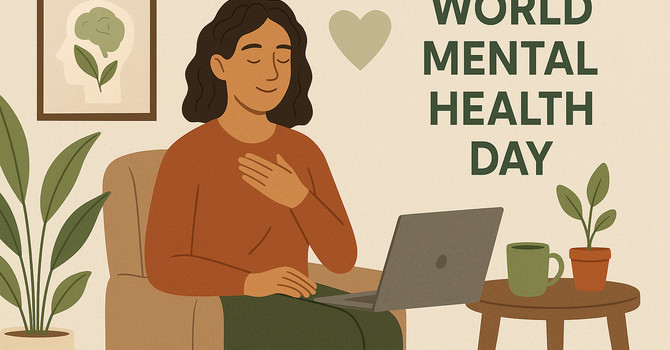
Emergencies can happen at any time.
Fires, floods, snowstorms, wildfires, and even earthquakes can surprise us when we least expect them. Canadians across the country face different types of emergencies depending on where they live.
The good news? You can protect yourself and your family by creating a Family Emergency Plan. Here’s how to get started.
Why Make a Family Emergency Plan?
When an emergency happens, things can become confusing and stressful very quickly. Having a plan helps your family:
-
STAY CALM.
-
Know exactly what to do and where to go.
-
Stay connected and safe.
-
Save time when every second matters.
A plan can make a difficult situation feel a little more manageable.
What Emergencies Should You Prepare For?
Across Canada, families may experience:
-
Blizzards and ice storms (common in many provinces and territories).
-
Flooding (especially near rivers, lakes, and low-lying areas).
-
Wildfires (especially in British Columbia, Alberta, and northern regions).
-
Earthquakes (British Columbia and parts of Quebec).
-
Tornadoes (Prairie provinces and parts of Ontario).
-
Hurricanes (Atlantic provinces).
-
Power outages (across all regions).
-
Extreme heat events (increasing in many areas).
-
Health emergencies (such as pandemics).
Check with your local emergency services to learn which risks are highest where you live.
How to Build Your Family Emergency Plan
Here are the basic steps to build a strong Family Emergency Plan:
-
Know the risks in your community.
-
Make a communication plan (how you will reach each other if separated).
-
Choose two meeting places (one close to home, one outside your neighbourhood).
-
List all emergency contacts (family, friends, and local services).
-
Make a plan for pets (including food, shelter, and transportation).
-
Create an evacuation plan (know how to leave your home safely).
-
Prepare an emergency kit (see below).
-
Plan for money needs (emergencies often have unexpected costs).
-
Practice your plan with your family at least once a year.
Your 72-Hour Emergency Kit
The Canadian Red Cross recommends that families have enough supplies to take care of themselves for at least 72 hours (three days).
Here’s what you should include:
Essentials:
-
Water (at least two litres per person per day).
-
Food (non-perishable, such as canned goods and granola bars).
-
Manual can opener.
-
Flashlight and extra batteries.
-
First aid kit.
-
Special needs items (medications, infant supplies, mobility aids).
-
Important documents (identification, insurance papers, prescriptions).
-
Cash (small bills are best in case electronic payment systems are down).
-
Extra clothing and sturdy footwear.
-
Blankets or sleeping bags.
Additional helpful items:
-
Battery-powered or hand-crank radio.
-
Cell phone chargers and power banks.
-
Hygiene items (such as soap, toothbrushes, and sanitary supplies).
-
Books, playing cards, or games to pass the time.
Tip:
Check your kit twice a year to update food, water, and supplies.
Do Not Forget an Emergency Fund
Emergencies often bring unexpected costs, such as:
-
Staying in a hotel or a temporary shelter.
-
Buying food, fuel, or supplies.
-
Replacing lost or damaged items.
-
Paying for urgent repairs.
It is a good idea to set aside a small Emergency Fund if possible.
Even a few dollars saved each week can build up over time.
Suggestions:
-
Keep some cash at home in a safe, easily accessible location.
-
Store a small amount of money in your emergency kit (preferably in small bills).
-
Plan ahead for how your family would manage without access to ATMs or banking services.
A financial cushion can ease a lot of stress when the unexpected happens.
Family Emergency Plan Checklist
Know which emergencies are likely in your area.
Create a family communication plan.
Choose two meeting places (one nearby, one farther away).
Write down emergency contacts.
Make a plan for pets.
Build a 72-hour emergency kit.
Set up an emergency fund.
Practice your plan once a year.
Teach children what to do in a calm, reassuring way.
Final Thought: Preparation Brings Peace of Mind
Emergencies cannot always be prevented, but being prepared makes all the difference.
Taking time to create a Family Emergency Plan today can protect your loved ones tomorrow.
Stay prepared, stay strong, and stay connected.
For more information on building your emergency kit and family emergency plan, visit the Canadian Red Cross at www.redcross.ca.
Bonus Tip: Where to Keep Emergency Cash
Store emergency cash inside your kit in a waterproof bag.
Choose small denominations ($5, $10, $20 bills) to make purchases easier if electronic payment systems are unavailable.
In Canada, both Emergency Preparedness Week and Safety and Health Week are observed during the first full week of May. In 2025, these events occur as follows:SafetyCulture+1Wikipedia+1.
-
Emergency Preparedness Week: May 4–10, 2025
This national awareness initiative, coordinated by Public Safety Canada, encourages Canadians to take proactive steps to prepare for emergencies. The 2025 theme is "Be Prepared. Know Your Risks." Wikipedia+5Get Prepared+5Get Prepared+5 -
Safety and Health Week: May 5–10, 2025
Led by the Canadian Centre for Occupational Health and Safety (CCOHS) and Health and Safety Professionals Canada (HSPC), this week focuses on promoting health and safety in workplaces, homes, and communities. It emphasizes the prevention of injuries and illnesses and fosters a culture of safety. AlignAB+3SafetyCulture+3CSSE+3
Both weeks provide valuable opportunities to raise awareness and engage in activities that promote safety and preparedness across various aspects of daily life.





